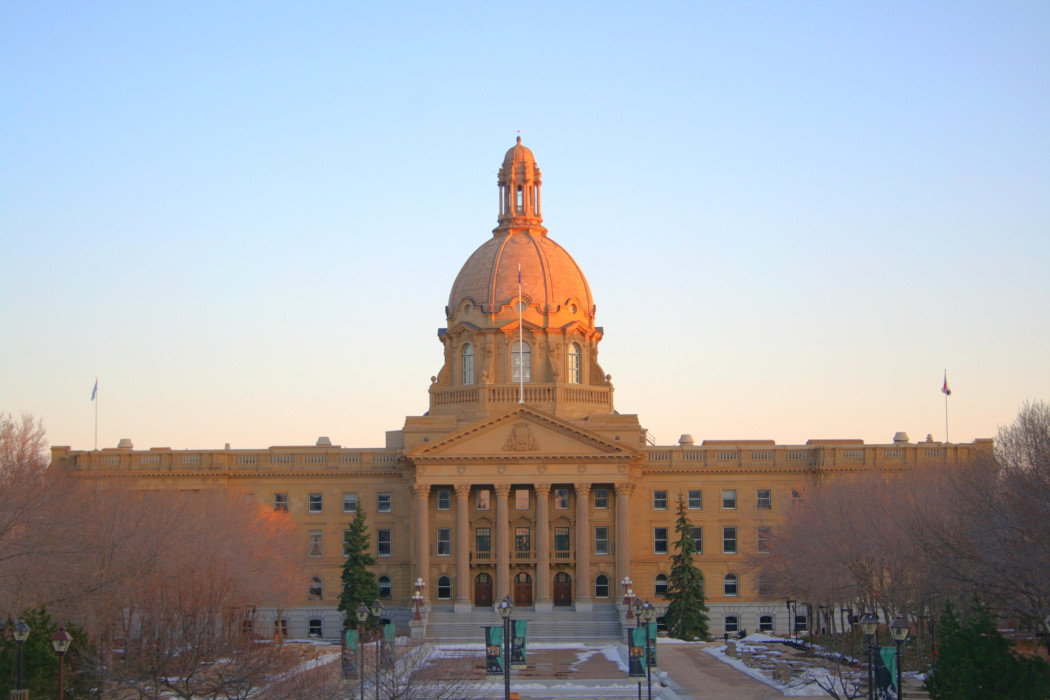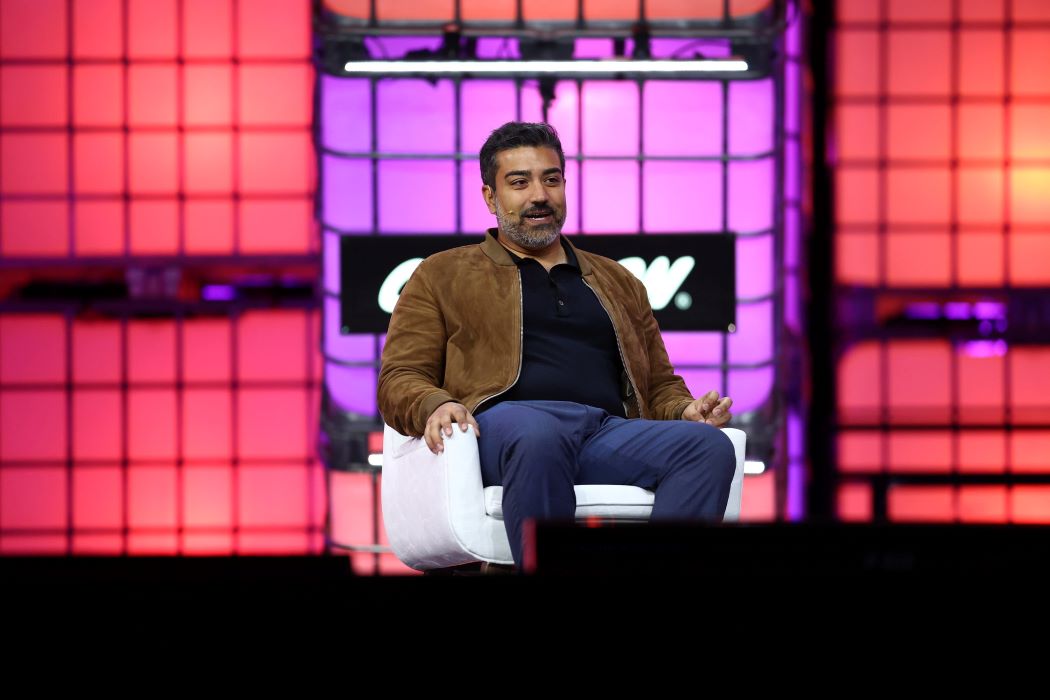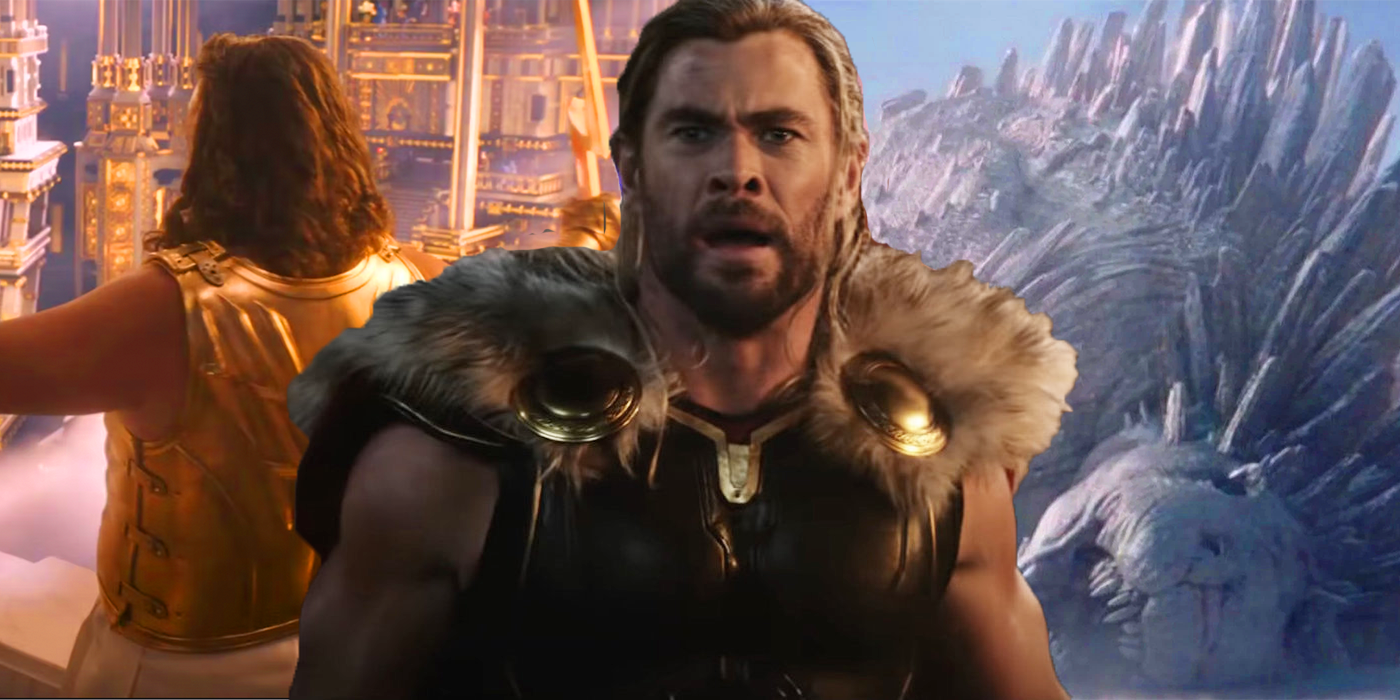
Every God In Thor: Love & Thunder
WARNING: Spoilers for Thor: Love and Thunder ahead.
With a villain named Gorr the God Butcher and a visit to the home of gods in Thor: Love and Thunder, it’s unsurprising that there are dozens of different gods in the movie. Thor: Ragnarok director Taika Waititi returns to direct the fourth Thor movie, which finds the God of Thunder traveling the universe to stop a new threat. That threat is the villain Christian Bale’s Gorr the God Butcher, who has been on a rampage and leaving a swath of dead gods in his wake.
As Gorr possesses the Necrosword, a powerful artifact capable of slaying any god–including Thor himself–Thor clearly needs help. He gains a team in the form of King Valkyrie, Korg, and Jane Foster, now the Mighty Thor, but it’s not enough to stop the God Butcher. Thor and his allies need help. They need more gods, and those gods can be found in Omnipotence City, the home of the gods.
The Omnipotence City scene is, naturally, packed full of gods and deities, some named and others anonymous. Some are based on real deities from human mythology, while others are made up gods unique to the Marvel universe. Here are all the gods in Thor: Love and Thunder, explained.
Thor Odinson

Played for over a decade in the MCU by Chris Hemsworth, Thor is the God of Thunder. Audiences are intimately familiar with Thor’s tragic arc through his time in the MCU, and Thor: Love and Thunder acts almost as a coda to his larger story. After the events of Avengers: Endgame, Thor has been traveling with the Guardians of the Galaxy. But his peace is interrupted when he is forced to confront Gorr the God Butcher, whose loss and grief serve as dark mirrors of Thor’s own.
Marvel’s interpretation of Thor and his Asgardian family is only loosely based on the Norse mythology of their origin, but the beats are the same. His father, Odin, was the King of Asgard and a fierce warrior. His mother, Frigga, was the queen and a talented sorceress. His adopted brother, Loki, is the God of Mischief, always causing chaos. And Thor is the God of Thunder, armed with the hammer, Mjölnir, and a warrior for his people.
Rapu (Gorr’s God)

Rapu is the first god shown on-screen in Thor: Love and Thunder. As the god to which Gorr prays, his follower’s pleas fall on deaf ears. Having just lost his daughter to starvation and close to death, himself, Gorr suddenly finds himself in a beautiful, fertile oasis. It’s there that he meets Rapu, his god, only to find that Rapu is cruel and indifferent to his suffering, considering humans to be expendable creatures. However, he makes the mistake of telling Gorr that he just slew the entity who previously carried the Necrosword, prompting Gorr to take up the sword and kill Rapu himself in his rage. Unlike a number of other gods in Thor: Love and Thunder, Rapu does not have a counterpart in real-life mythology and is created for the movie.
Zeus

Russell Crowe’s Zeus is unquestionably different than some might have expected, but, surprisingly, somewhat closer to the Greek mythology than most fictional interpretations of the god. As the father of the gods of Olympus, Zeus is one of the most powerful beings in the universe, as well as immortal. As such, it has made him arrogant and lazy; when Thor asks for his help by Zeus sending his troops to help fight Gorr, Zeus blows him off, treating it as a minor inconvenience. However, Zeus’ lightning bolt, which is an incredibly powerful weapon, comes in handy later in the fight against Gorr.
Hercules

The post-credits scene of Thor: Love and Thunder reveals the surprise introduction of Ted Lasso’s Brett Goldstein as Hercules, the son of Zeus and a demi-god. After nearly being killed by Thor with his own lightning bolt, Zeus is out for revenge and sets Hercules on the mission to find and kill Thor. It’s unclear where Hercules will pop up again in the MCU, but he’s a sure bet to be an antagonist for Thor 5, should it happen. While his story will undoubtedly diverge from the Greek mythology, him being sent to best Thor is right in line with the mythology. Hercules was one of Greek mythology’s greatest heroes, who slew or captured a number of terrifying, mythical creatures in order to gain immortality and live on Mount Olympus with the rest of the gods. That he’s the one tasked with tracking down Thor is no surprise to anyone familiar with the old legends.
Falligar the Behemoth

Falligar, first spotted in the Thor: Love and Thunder trailer, is one of Gorr’s most notable kills in the movie, as well as one of the most tragic. Known formally as Falligar the Behemoth, Falligar was the patron god of the Galactic Frontier and champion god of the Tournament of Immortals. Despite his immense size and fearsome looks, Falligar, as Thor explains was actually quite a nice guy and friendly to all–certainly not a selfish god who deserved to die at Gorr’s hand. Like Rapu, Falligar exists only in the Marvel universe, and not in real-world mythology.
Lady Sif

Jaimie Alexander makes her long-awaited return to the movies as Lady Sif in Thor: Love and Thunder. She’s not in the movie long, but plays an important role as the person who sends the distress signal to Thor, first alerting the God of Thunder to the threat of Gorr the God Butcher. She crosses paths with the God Butcher and comes out the loser, with him cutting off her arm and leaving her for dead. However, Sif survives, which is unsurprising considering what a warrior she is in the MCU. It’s a far cry from how she’s depicted in the Norse mythology, where she is associated with the earth, potentially being a goddess of fertility, crops, and family.
King Valkyrie (Brunnhilde)

In Thor: Love and Thunder, King Valkyrie (Tessa Thompson) is one of Thor’s fiercest allies in the fight against Gorr. While Valkyrie is a good king for her people, an innovator and protector who has transformed New Asgard into a utopia that welcomes tourists, she’s bored. As a former member of the Valkyrie, bureaucracy is not what she was born to do; battle is. Valkyrie’s real name is Brunnhilde; in the Norse tradition, Brunhilde was also one of the Valkyrie and a powerful shieldmaiden. She’s a main character in the Prose Edda and Poetic Edda, where she is a fierce warrior just as she is in the MCU.
Young Frigga

Though Rene Russo does not return to reprise her role as Thor’s mother, Frigga, a young version of Frigga (Chanique Greyling) is shown in a flashback scene. Toward the start of the movie, Korg recounts Thor’s adventures, recapping his early childhood. During that monologue, the flashback sequence shows a young Frigga charging into battle with a baby Thor strapped to her chest, proving she’s always been a fighter. As a powerful sorceress who taught Loki his Asgardian magic, Frigga was a force to be reckoned with. In Norse mythology, she’s also associated with magic and the supernatural, often being associated with clairvoyance and prophecy.
Heimdall

Despite his death in Avengers: Infinity War, Heimdall (Idris Elba) makes a brief appearance in the second post-credits scene of Thor: Love and Thunder. He’s there to welcome Jane Foster to Valhalla, the afterlife for Asgard’s warriors. Unsurprisingly, he had been expecting Jane, with his all-seeing vision still working even after death. His role is much the same in mythology, where he is also the watcher of the gods, stationed with the all-important duty of watching over Asgard and protecting the Bifrost. Whether or not Heimdall will return is up in the air, but even if he doesn’t, it seems his son, Axl, has inherited his father’s powers and is ready to step into his place.
Axl Heimdallson

In a surprise twist, Thor: Love and Thunder reveals that Heimdall has a son named Astrid, though he prefers to go by Axl. Axl Heimdallson is young, but already shows flashes of great power like his father, Heimdall. Though he can’t fully control his powers yet, he’s instrumental in helping Thor rescue him and the rest of the children by allowing Thor to see through his eyes to figure out their location and map out the area. In the final battle against Gorr, Axl fights bravely and then safely uses the Bifrost to spirit the Asgardian children back to New Asgard. Like a few others on this list, Axl is a new creation for the MCU.
Dionysus

Veteran character actor Simon Russell Beale briefly appears in the Omnipotence City scene as the god Dionysus in Thor: Love and Thunder‘s cast of characters. In Greek mythology, Dionysus is the god of wine, ecstasy, and wild parties–hedonism personified, and the Greek equivalent of the Roman Bacchus. Understandably, a number of cults dedicated to Dionysus sprang up in ancient times, with his worshippers being intensely devoted to him and what he represented. Interestingly, though Zeus is spotted with a harem around him, it’s actually Dionysus who was known for his retinue of maenads, female followers who were often depicted as being in a frenzy.
Every Other God In Omnipotence City

Bao – Bao is the God of Dumplings, and a friendly, cheerful god who looks just like an anime dumpling with an emoji face. Unlike some of the other gods in Omnipotence City, he doesn’t seem threatened by Thor and his allies, but happy to see them.
Old Kronan God – As they’re walking to their seats, Korg points out his old Kronan god, who resides on a huge throne reminiscent of the Iron Throne of Game of Thrones. In a clever visual joke, the throne is made of scissors–after all, rock beats scissors.
Bast – Bast can be spotted in the Omnipotence City scene sitting in front of Jane and Valkyrie. As the Egyptian cat goddess of ancient mythology, in the MCU, she is also the patron goddess of Wakanda. After Thor: Love and Thunder, she’s set to have a larger role in Black Panther: Wakanda Forever.
Minerva – The Roman goddess Minerva can also be spotted in the Omnipotence City scene, though she’s more regal than some of the other gods. In mythology, Minerva is the goddess of justice, law, and wisdom, and is well-respected among the other gods.
Artemis – Yet another Greek deity, Artemis appears among the godly characters in Thor: Love and Thunder, though she might be more at home with the Asgardians. Artemis is considered the goddess of the hunt and wild animals. She’s also associated with the moon in many cultures.
Elche Goddess – An “Elche Goddess” is also listed in the credits for the Omnipotence City scene. She likely takes her name from the Lady of Elche, the name of an ancient bust that depicts a strange pagan goddess with wheels on her head. Some have associated her with Tanit, the patron goddess of the ancient city of Carthage.
Serpent God (Kukulkan or Quetzalcóatl) – In the Golden Palace of Omnipotence City, one of the most noticeable gods is a giant, feathered serpent twining around one of the massive pillars that holds up the domed roof. This is undoubtedly Quetzalcóatl or Kulkulkan, the respective Aztec and Mayan names for the same serpent god. In ancient Mesoamerican belief, he was the god who brought winds, rain, and the sun.
Goddess of the Dead – In the credits, there is a “Goddess of the Dead” who was also spotted in the scene with the other gods. In the MCU, Hela is the Goddess of Death, so it’s unclear which deity this is. However, there are a number of goddesses associated with death across mythology, including the Morrigan, Aita, Persephone, Dea Tacita, Proserpina, Shiva, and others.
Jademurai God – A Jademurai God is also briefly seen in the Golden Palace. Played by Kuni Hashimoto, it’s unclear if the Jademurai God is based on a real deity, or is a creation for the MCU. However, he appears to be a counterpart of a Japanese god of some sort.
Fur God – The Hobbit‘s Stephen Hunter plays a Fur God in the Golden Palace, though not much is known about him. One of the more niche gods in the movie, he’s exactly what he appears – the patron saint of fur.
Other Gods & Goddesses Referred To In Thor: Love & Thunder

Loki – Of course, it wouldn’t be a Thor movie without at least a reference to Loki. Thor: Love and Thunder accomplishes this in a clever way, with Thor revealing his back is covered with tattoos for those he’s lost, the most prominent being for Loki, his adopted brother and the God of Mischief. He’s also shown in a brief flashback scene.
Odin – Like his mischievous son, Odin is also briefly shown in Korg’s flashback story sequence. Likewise, he’s also included on Thor’s tattoo, with his name being part of a scroll tattoo with the names of loved ones Thor has lost.
Sequoia Queen & Oaken King – The Sequoia Queen and Oaken King are shown briefly in an image as two of Gorr’s victims. Their story in Thor: Love and Thunder is similar to the comics, where, as the rulers of Glenglavenglade, the Garden Eternal, they were two of the first gods killed by Gorr the God Butcher.
Hela – Hela, Thor’s half-sister and the Goddess of Death, is also referenced in Thor: Love and Thunder. In theory, Hela is dead, killed by Surtur in Thor: Ragnarok. However, as audiences never saw a body, it’s entirely possible she survived and will return.
Ra – Ra is also mentioned in the movie. As the most important and powerful deity in Egyptian mythology, Ra was the father of the gods and of all creation. He also ruled over the sun, light, and power as the ultimate king.
Flower God – In one scene, there is a god made of flowers who appears briefly on the scene. It’s unclear who this god might be, and was likely simply a creation for the movie.
Aegir – The cheekiest nod to a god in Thor: Love and Thunder was the name of the Asgardian tour boat that they repurpose to travel to Omnipotence City. The boat is named Aegir, which, in the comics, is the name of Asgard’s God of the Seas.


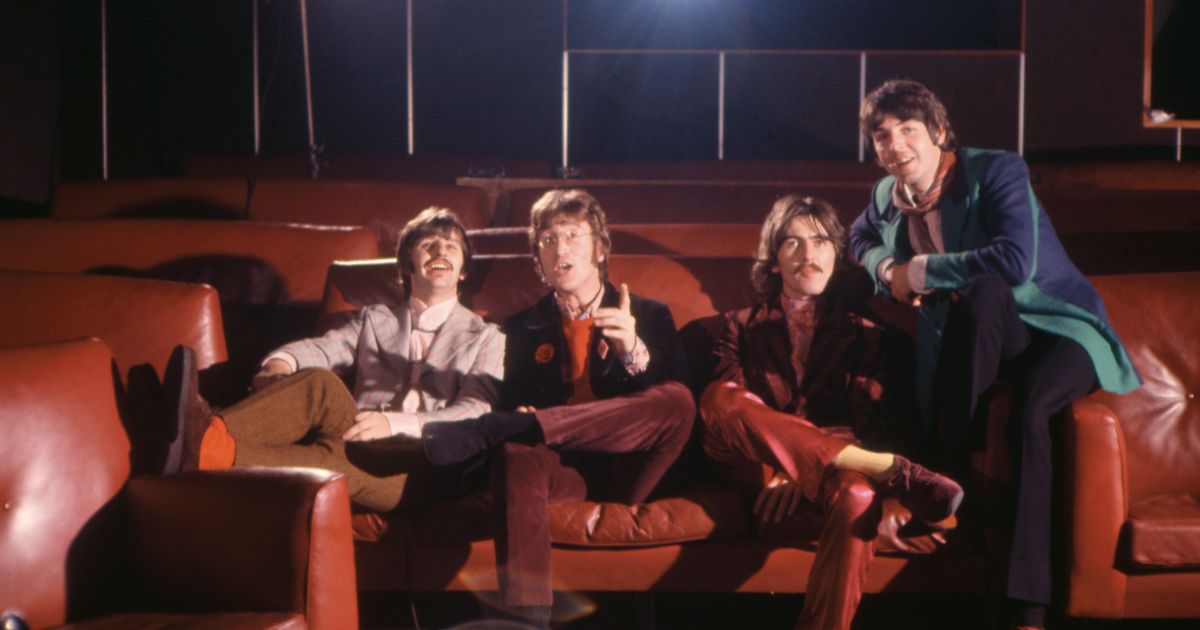
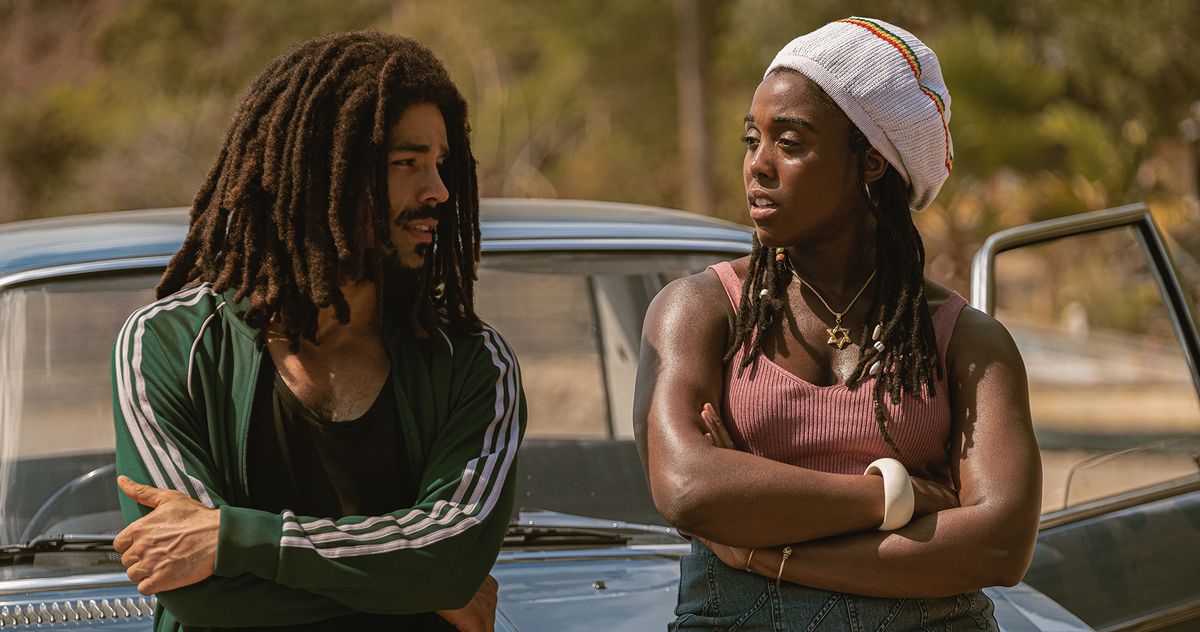














































![iFi's GO Bar Kensei Dongle DAC Supports K2HD Technology With Some Samurai Swagger [Updated] iFi's GO Bar Kensei Dongle DAC Supports K2HD Technology With Some Samurai Swagger [Updated]](https://i0.wp.com/cdn.ecoustics.com/db0/wblob/17BA35E873D594/33FF/45A11/QTXOLJR4xDKSNMMk2WlTgjaIlvSgcYpeU1xJzUwIoYs/ifi-go-bar-kensei.jpg?w=768&ssl=1)




























